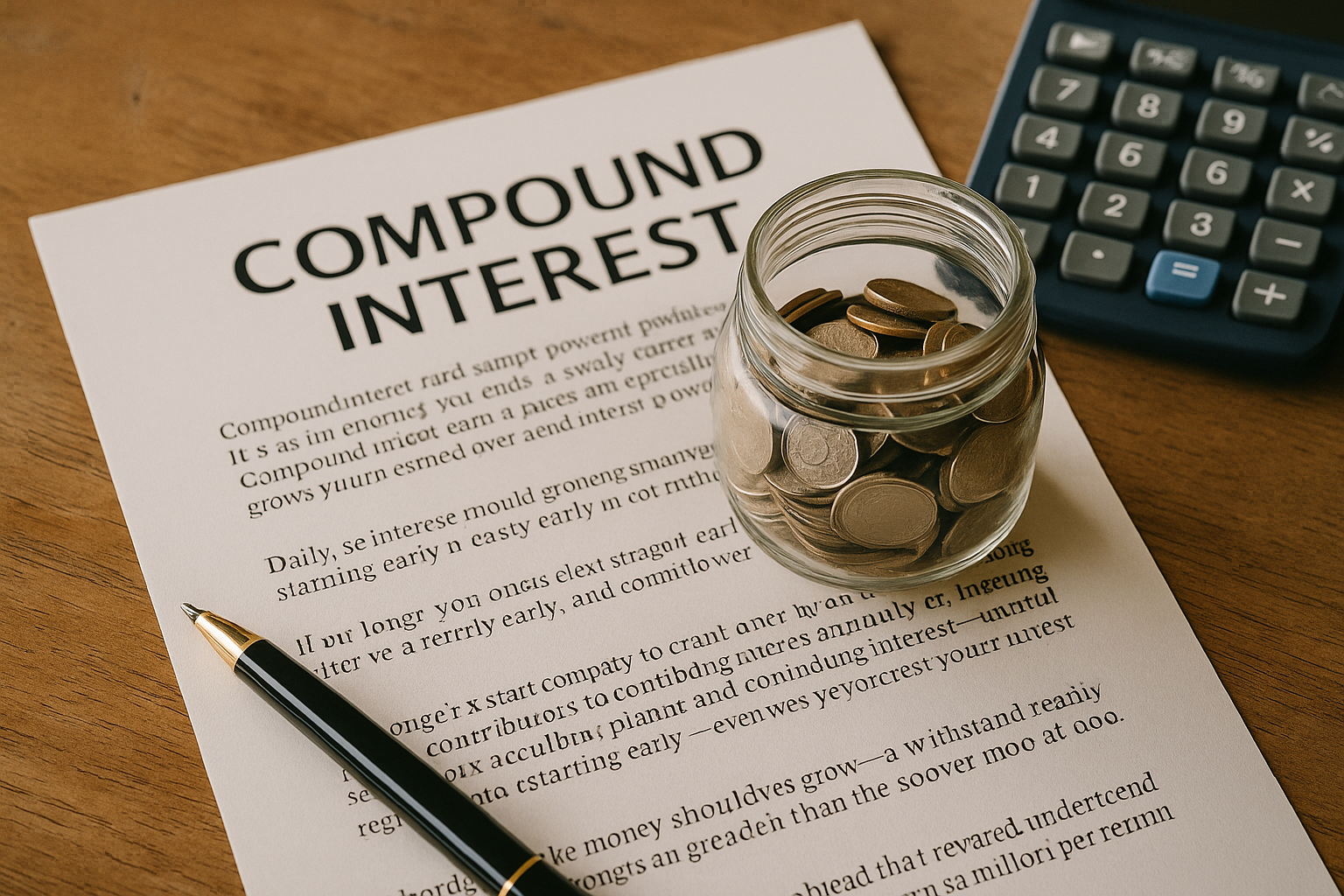Understanding the Power of Compound Interest
Compound interest is often described as the most powerful force in personal finance—and for good reason. It’s the process where your money earns interest, and then that interest earns interest, creating a snowball effect over time.
Unlike simple interest, which only pays on the original amount, compound interest grows your wealth exponentially the longer your money stays invested or saved.
How It Works: A Simple Example
Let’s say you invest $1,000 at a 5% annual interest rate:
- After one year: $1,000 becomes $1,050
- After two years: $1,050 earns interest, growing to $1,102.50
- After ten years: You’ll have $1,628.89—not from adding money, but from interest compounding itself
The longer your money stays untouched, the faster it grows.
The Two Key Factors: Time and Consistency
To take full advantage of compound interest, you need two things:
- Time: The earlier you start, the more compounding works in your favor
- Consistency: Regular contributions help accelerate the compounding effect
Even small amounts can grow significantly over decades. That’s why starting early is more important than starting big.
Daily, Monthly, or Annual Compounding?
Interest can compound on different schedules—daily, monthly, quarterly, or annually. The more frequently it compounds, the faster your money grows.
For example:
- $1,000 at 5% annual interest compounded yearly = $1,628.89 after 10 years
- Compounded monthly = $1,647.01 after 10 years
- Compounded daily = $1,648.66 after 10 years
Though the differences seem small early on, they add up over longer periods and larger balances.
Compound Interest in Savings Accounts
Some high-yield savings accounts offer compound interest. While the rates may be lower than investments, they are a safe place to watch your money grow over time.
Look for:
- Compounding frequency (daily is ideal)
- No monthly fees
- Competitive APY (Annual Percentage Yield)
Your savings won’t grow as fast as investments, but they’ll grow faster than in traditional accounts.
Compound Interest in Investments
Compound interest really shines when applied to long-term investing, especially with:
- Stocks and index funds
- Retirement accounts like IRAs or 401(k)s
- Dividend reinvestments
Each time you earn interest or dividends, reinvesting them instead of cashing out boosts your future returns.
Avoiding the Enemy of Compounding: Debt
Compound interest doesn’t just work for you—it can also work against you. Credit cards and high-interest loans compound your debt, making it grow rapidly if unpaid.
If you carry a balance with 20% interest:
- A $2,000 credit card balance can grow to over $3,800 in five years with no payments
That’s why paying off high-interest debt is a priority before focusing on compound growth.
Tools to See Compound Interest in Action
You can visualize your future earnings using:
- Online compound interest calculators
- Investment apps with projections
- Spreadsheets tracking your contributions and growth
These tools make the concept more tangible and help with long-term planning.
Real-Life Impact: Start Early vs. Start Late
Imagine two people:
- Alex starts saving $200 a month at age 25
- Jordan starts saving $300 a month at age 35
Even though Jordan contributes more monthly, Alex ends up with more money by retirement, simply because of time. The earlier you start, the more advantage you gain—even with smaller amounts.
Final Thoughts: Let Time Do the Heavy Lifting
Compound interest rewards patience, consistency, and long-term thinking. It’s not a get-rich-quick strategy—it’s a build-wealth-slowly-and-surely approach.
Start now, stay consistent, and let your money work for you. The sooner you begin, the greater the rewards down the road.
